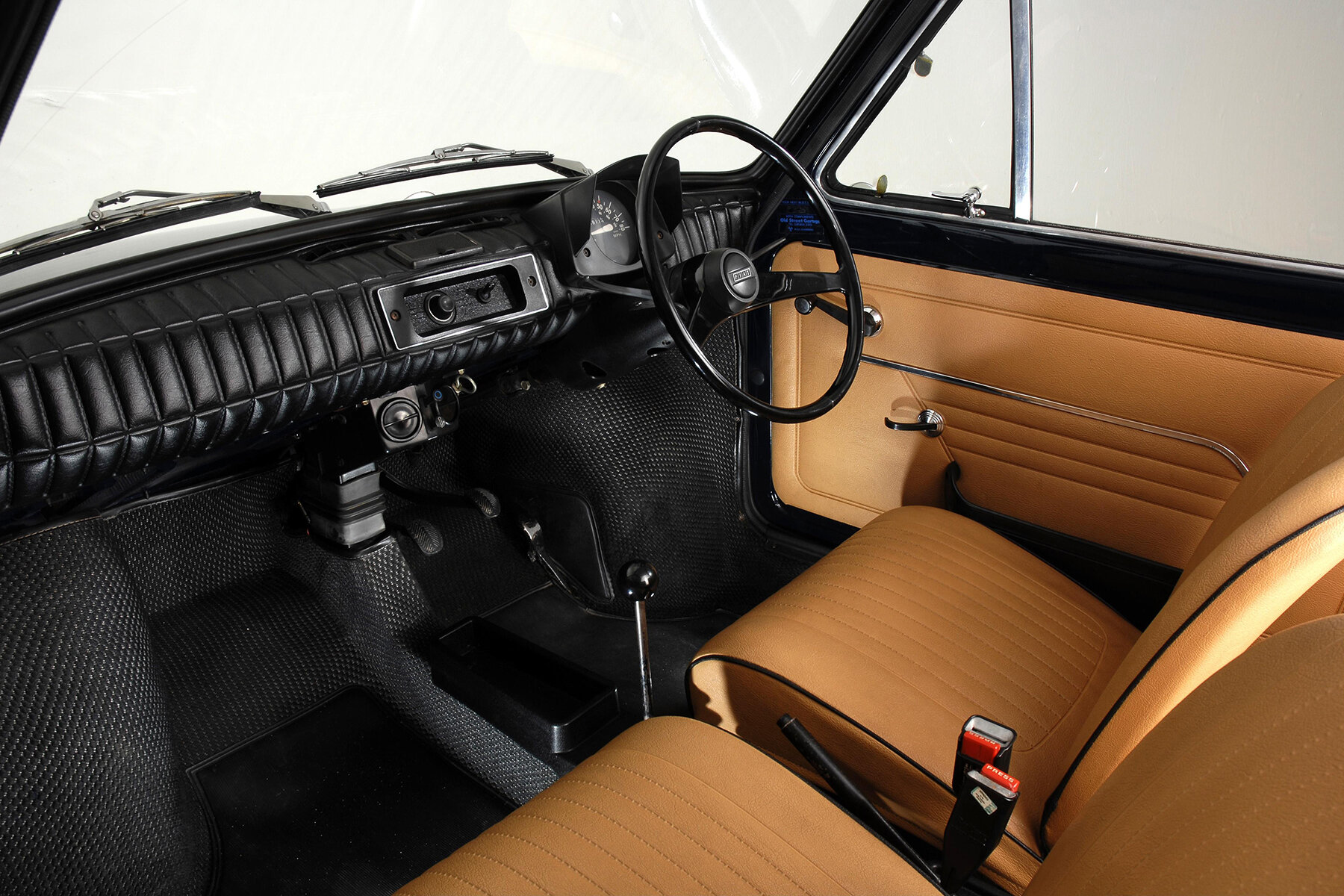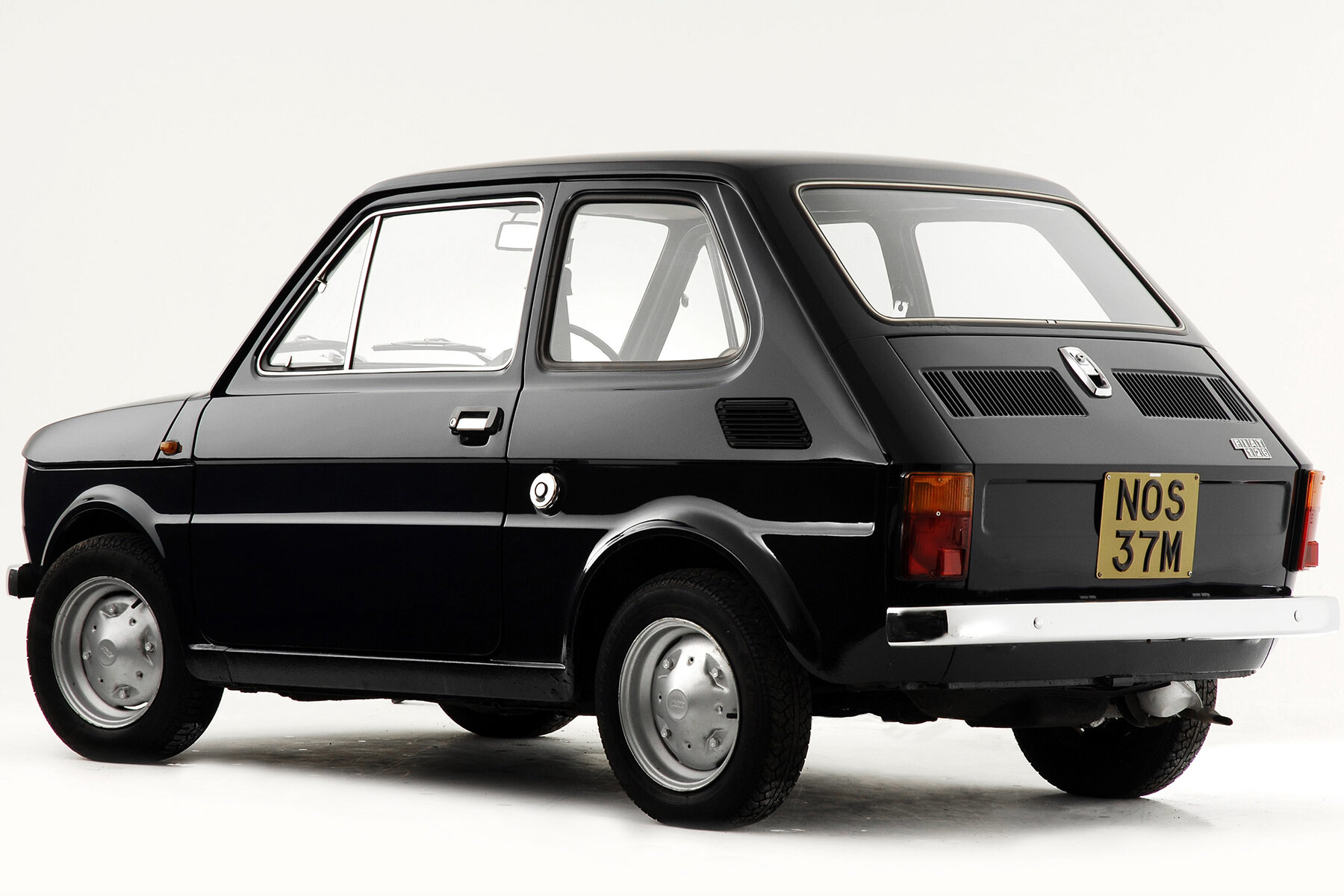
In a era of front-wheel drive superminis, the Fiat 126 remained stubbornly rear-engined – today, it’s the car’s classic scene signature.
Every Monday we’re serving you up a delicious slice of pure postulation. That’s right, once a week we’re using our expertise and passion for the subject to predict what motors are destined for classic car stardom. This week, Parkers finance editor and former Classic Car Weekly news editor, Murray Scullion proposes the Fiat 126.
A recent rendering of an up-to-date Fiat 126 has got us thinking about Fiat’s lineage. The 500 is an iconic and cool classic. The Panda is loved among car Twitter circles. But the 126 in many parts of Italy and Eastern Europe (remember, it was built in Poland) is just a cheap and easy to fix mode of transport. But in Western Europe, the tides are slowly turning.
People are buying 126s as classic cars. As things to enjoy and adore, rather than simply to get in and drive. And we say, it’s about time too.
Fiat 126: History
The original Fiat 500 achieved legendary status for its utilitarian chic style and genuinely usable practicality. The 126 replaced the 500, but could never quite live up to its cult status. Like the 500, the 126 has an air-cooled, two-cylinder, rear-mounted engine. Fun fact: the designer of the 126 engine, Aurelio Lampredi, previously penned a 4.5-litre Ferrari F1 engine.
But back to the 126. The first UK-spec cars arrived in the summer of 1973. Production also began in Poland in the same year. Various trims and models with sunroofs came and went, before the 594cc engine was replaced with a 652cc engine in 1977.
By 1980, the Poland outfit was the sole factory building the 126. Late 1983 models received a raft of improvements - including reclining seats and a laminated windscreen. December 1987 saw the introduction of the Bis model - with its 704cc water-cooled engine. It also offered a hatchback rear end.
Amazingly, the 126 survived in the UK up until 1992 - some 19 years after first arriving here. Even more amazingly, Polish-built cars soldiered on in Eastern Europe until 2000. Although it was at least improved upon a few times before being retired - its most notable upgrade involved it nicking some parts from the new Fiat Cinquecento in 1994.
Fiat 126: Rarity

An early-1970s supermini interior, except in miniature.
Rarity usually equals money in the classic world - but not so with the 126. Precise production figures are hard to come by, but between 4 and 4.5 million 126s were built across Italy and Poland. Around 1.3 million in Italy, 2,000 by Fiat Steyr in Austria, and between 3 and 3.3 million in Poland.
Those later hatchbacked and water-cooled Bis models, made solely in Poland, look to make up close to a million of the four-or-so million made. According to howmanyleft.co.uk only 207 Fiat 126s are registered and on the road in the UK (at time of writing).
This makes the 126 rarer than many very very expensive Ferraris and or other low volume serious-money supercars.
Why should you care?
Fun, frugal, cheap, as well as cute...and dare we say it...cool. The Fiat 126 has an awful lot going for it. Let’s talk money first. Really nice examples can reach £5000. But usable cars with MoTs are more like £2500-£3000 - just bringing 126s into the realms of affordability for those who’re looking to dip a toe into classic car ownership.
The good news is that, believe it or not, many 126s have been subject to a restoration. This means there are plenty of examples out there that have already had money pumped into them by someone else. Generally, early air-cooled models are worth more than later water-cooled ones. Good examples will set you back between £3000-£3500, and Classic Car Weekly’s Price Tracker predicts that these prices will rise to £5000 by 2025. So buyers could have a 126 for a few years, put some money into keeping it on the road, and not lose out on any money.
No matter which age car you buy, none are particularly practical, or fast. But they are cheap to run (will do up to 50mpg according to some drivers) and they’re served by plenty of clubs - plus parts availability is stellar too. The Fiat 126 also has a loyal following among motor sport enthusiasts - it’s ripe for rallying and are regulars in grassroots motorsport. Bike engine swaps are also popular for the 126 - if that’s your kind of thing.
More than anything, the Fiat 126 suits a great deal of enthusiasts who are after something cheap, easy to fix, and rare.
The CCfS Classic Car Prediction
The fact that the 126 soldiered on for so many years goes against it with some classic enthusiasts. Sniffy types won’t like the idea of allowing a car built in the nineties in Poland into some shows. Fiat 126s are well catered for at least - for instance, Club 126 UK offers technical info and workshop manuals for members. Facebook is awash with Fiat Clubs with 126 factions too - all offering rallies and the like for club members.
There is a lot of love out there for the 126, and a lot of events to take them to. And while early models from the Seventies are bonafide classics, those later-made Polish cars will take another few years to be truly accepted into the wider classic car sphere.

It’s a great-looking piece of design, but is the Fiat 126 good enough for your classic car needs?